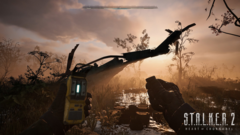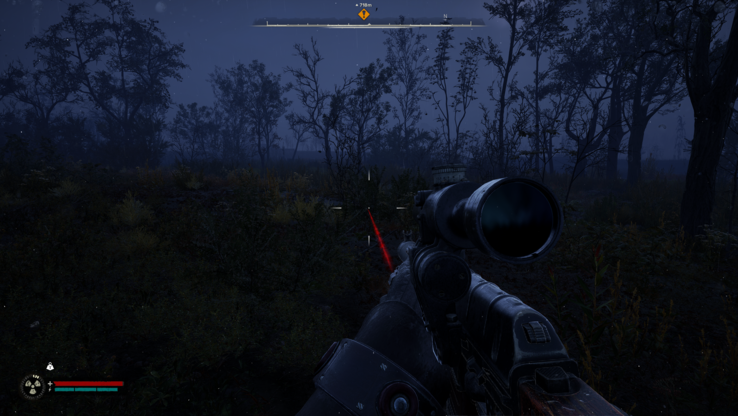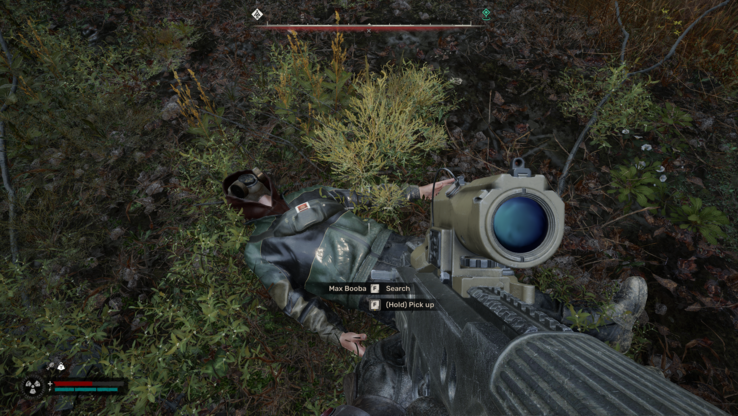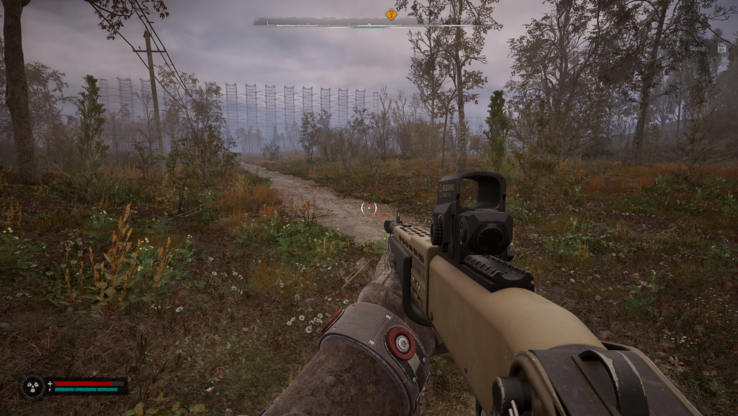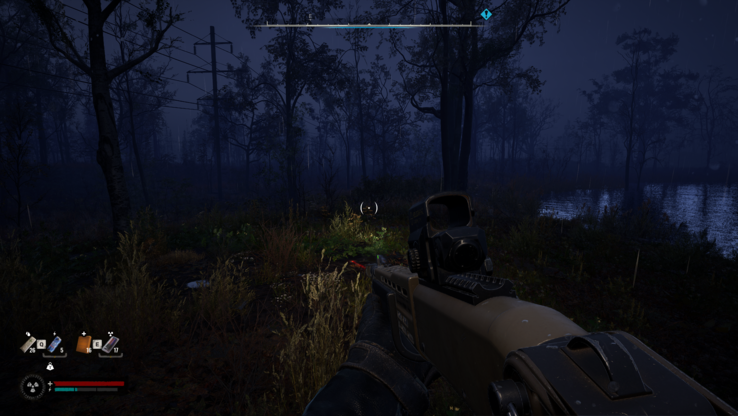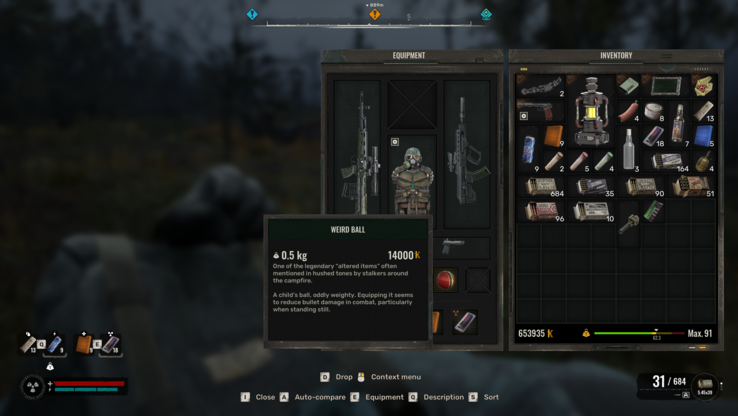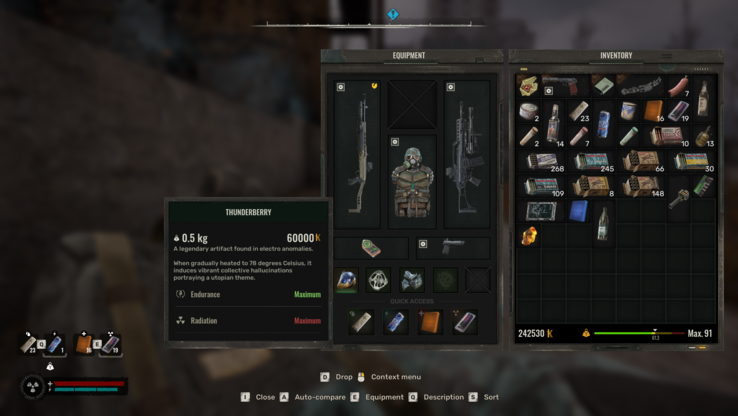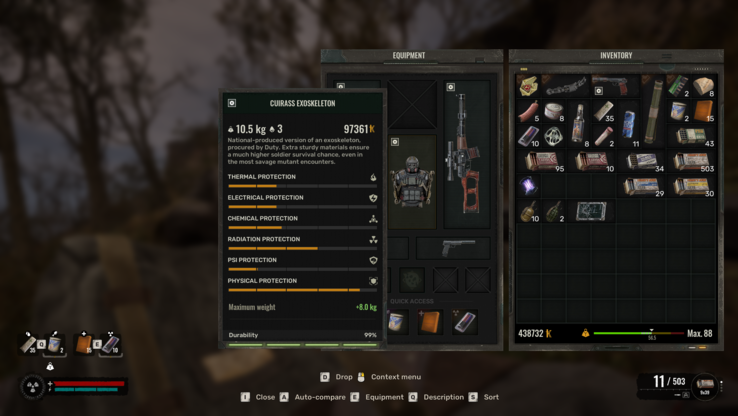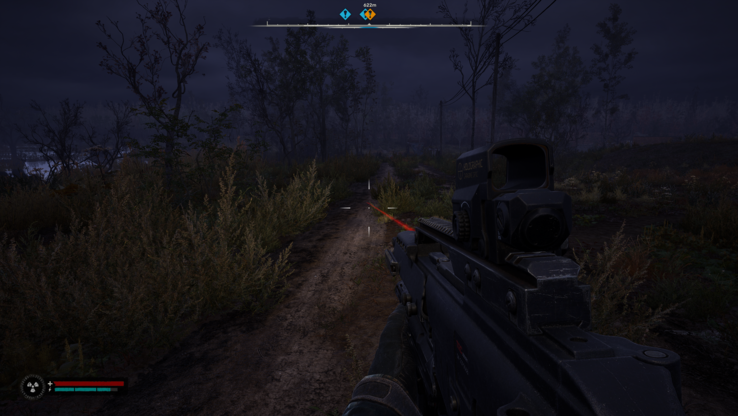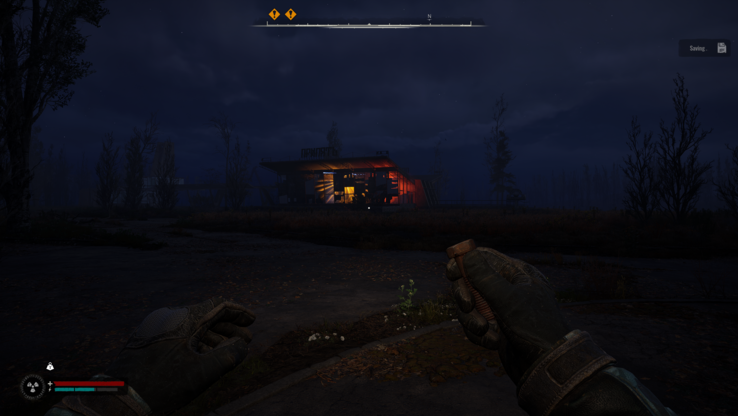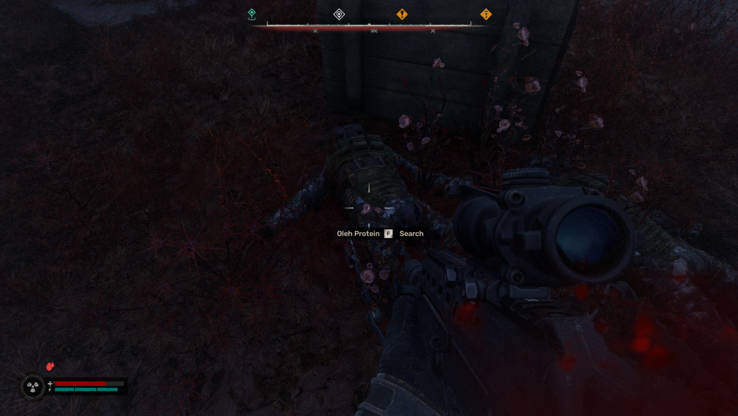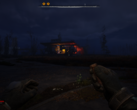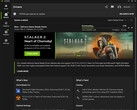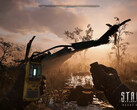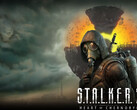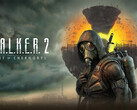I’ve lost count of the number of times S.T.A.L.K.E.R 2: Heart of Chornobyl has been delayed, and understandably so. GSC Game World didn’t have the best conditions for game development, especially towards the tail end of the game. Despite the odds, we finally got a game and I can safely say it did not disappoint…kinda. More about that later. Now, I must admit I played the original S.T.A.L.K.E.R: Shadow of Chernobyl, Clear Sky and Call of Pripyat a long time ago and have little memory of the universe, so some of the subtler references may have been lost on me. At the time of writing, I’ve progressed past the point of no return in the story, but haven’t finished the game yet. I couldn’t even if I wanted to because of reasons discussed in the next paragraphs.
As an Unreal Engine 5 game, S.T.A.L.K.E.R 2: Heart of Chornobyl demands beefy hardware. My trusty Ryzen 7 5800X3D and GeForce RTX 3080 Ti were quickly overwhelmed at 4K, prompting me to drop the resolution to 1440p. Even at ‘High’ settings, there are noticeable frame drops in some indoor areas, more so in ones with NPCs. There have been reports of sub-par performance across all tiers of hardware. Refer to our performance analysis to get an idea of how the game might run on your PC/laptop.
Lacklustre performance notwithstanding, even the actual game has its fair share of bugs. Some quests don’t work as intended, UI elements often go missing after an encounter with some enemies, the sound cuts off randomly, and some NPC interactions are straight-up weird. I’ve had to backtrack progress just to get the story moving. Even that stops working after a point and now I’m stuck with no way to progress the story without loading an older save. One side quest randomly completed itself shortly after I accepted it.
The first few hours of the game play fine, but it all goes downhill shortly after, then there’s the problem of quest items lingering in your inventory for longer than necessary. That wouldn’t be a concern in a regular game, but S.T.A.L.K.E.R 2: Heart of Chornobyl’s inventory management system doesn’t allow much in the way of headroom. More on that in a bit. While I wouldn’t call the game unplayable in its current state, you’re better off waiting for a few patches before trying it out. If you can’t wait, there are plenty of mods over on Nexusmods that address some of the game’s more annoying issues.
S.T.A.L.K.E.R 2: Heart of Chornobyl, at its very core, is about surviving against overwhelming odds. You’re thrown in the midst of a cruel, unforgiving world with nothing but a pistol, a PDA and your wits. Conveniences we take for granted in modern-day AAA games, such as fast travel, are mostly absent. While the feature does exist, you can only travel between pre-determined hubs after you’ve discovered them for a fee. This actively encourages you to engage with the game and walk around throughout its vast, expansive map.
Hazards are aplenty, with a mix of bandits, mutants and zombies waiting for you at every turn. In the early game, running away will be your best strategy, as your gear won’t be powerful enough for sustained combat. I’d recommend that you finish the first three- or four-story quests before attempting to explore the world. That said, some areas are locked behind story progression, so you can’t sideline the main quest entirely. After a point, you have no choice but to comb through every point of interest in an area, marked by a question mark.
Here, you may or may not find stashes (marked by three triangles) that contain weapons, ammo, medkits and most importantly, weapon/armour upgrade schematics. The better (or worse, depending on who you ask) part is that every individual weapon/armour requires a different set of blueprints, so if your build relies on one specific piece of gear, you’ll have to comb through plenty of stashes before getting your desired upgrade.
The UI is minimal with a health bar, stamina bar, radiation meter, a compass and an occasional pop-up showing your consumables. It has a very early 2010 vibe to it and will quickly appeal to those who want minimal distractions on their screen. This, combined with the dark, almost Lovecraftian theme, makes it feel like more of a survival horror game than a generic FPS experience. While one could liken it to Fallout to a certain degree, S.T.A.L.K.E.R 2: Heart of Chornobyl isn’t very heavy on the RPG elements, although the choices you make throughout your play through have consequences and will affect the ending you get.
Some of the best gear, like the Cuirass Exoskeleton, is hidden in unmarked buildings. Now, combing through every building in the zone is an arduous task, but there are enough dedicated fans out there who will be up to it, and it won’t be long before we get a detailed breakdown of what can be found where. For now, it’s best to stick to whatever you can buy off NPCs. Some store-bought armor can easily get you through most of the campaign with relative ease. Your average S.T.A.L.K.E.R 2: Heart of Chornobyl gameplay loop will involve a lot of running around a dystopian landscape dotted with anomalies, vestiges of civilization and radiation.
There’s a ton of radiation everywhere. Some of it is marked with signs, and when it isn’t, you need to listen to your Geiger counter. A scanner is essential to find your ways around anomalies and to hunt for artefacts. The only way to gain power is via artefacts and gear. You can get one of the most powerful items(Weird Ball) near the game’s starting area (Zalissya). I’d highly recommend making a beeline for it as soon as possible, as it will make gunfights a whole lot easier. Initially, artifact hunting can get a little scary because you start with a virtually useless scanner.
With enough practice, it eventually becomes second nature. There’s a subtle fourth wall break as you become one with The Zone, and in return, it rewards you with artefacts of better quality. Towards the end game, you have to strategically plan which artifact to slot in depending on the types of enemies you encounter. Carry weight is another divisive mechanic from S.T.A.L.K.E.R 2: Heart of Chornobyl. There’s only a certain amount of weapons/ammo/healing items/artefacts/armour you can lug around before it weighs you down, directly affecting how fast you move.
This actively disincentivizes hoarding because a player’s first instinct would be to vacuum up any gear found on defeated enemies. But, this is also a tad detrimental as it puts an artificial restriction on how long your gameplay loop will last, especially on harder difficulties.
There are many things to like about S.T.A.L.K.E.R 2: Heart of Chornobyl: the aesthetic, the realistic gun mechanics, the seamless integration of the three previous S.T.A.L.K.E.R games, a near-perfect representation of The Zone, in-game choices that actually have consequences, dynamic interaction between factions and most importantly, the world building. It is a fitting sequel to one of the most genre-defining games of its era.
However, it isn’t something I’d recommend you play right now for a few simple reasons. Lacklustre performance and game-breaking bugs aside, the game has a ton of immersion-breaking annoyances. Mutants, such as, Bloodsuckers, have far too much health, deal too much damage and are far too fast. The hitboxes on the jumping rats are weird. That, combined with their non-stop, erratic motion, make them frustrating to deal with. Boars and dogs are always aggressive, so you have to waste even more precious ammo clearing them out.
Weapon/armour repair costs are far too high. This is extra problematic because side-quest payouts are nowhere close to keeping up with rising gear maintenance costs. To make matters worse, you can’t sell most gear looted off enemies because they’re in a damaged state. There’s all of the one NPC in the entire Zone who will buy broken gear, of which you can’t carry much of anyway because of weight restrictions. Then there are other minor annoyances like enemies randomly spawning on top of each other, a short day-night cycle and the over availability over certain ammo types (12x70 buckshot) compared to others.
All of these can easily be fixed via patches, which is why I recommend that you wait for a while. Unlike Starfield (sorry Todd, you’ll be catching strays for a while after Shattered Space), S.T.A.L.K.E.R 2: Heart of Chornobyl gets its fundamentals right. It can only get better from here, and I hope it gets all the acclaim it deserves. I can’t wait to see what the modding community has in store for S.T.A.L.K.E.R 2: Heart of Chornobyl. Last time, we got gems like S.T.A.L.K.E.R Gamma, and I would really like to see something like that created again.
Shortly after I finished writing this, the developers put out two patches that address some issues highlighted above. Unfortunately, I was unable to test those because I have progressed beyond the point of no return. I’ll start a fresh play through and update the review later because there’s still plenty of the zone left to explore. Massive props to GSC for highlighting the community’s concerns nine days after launching the game.




